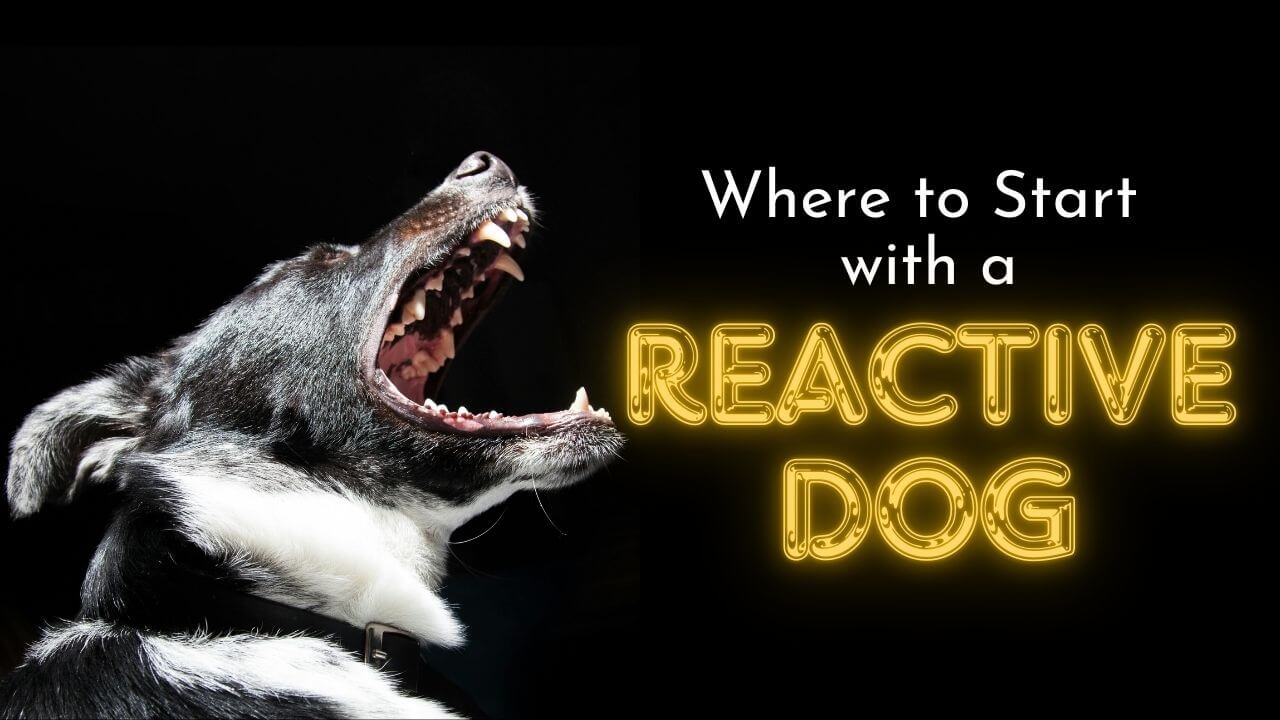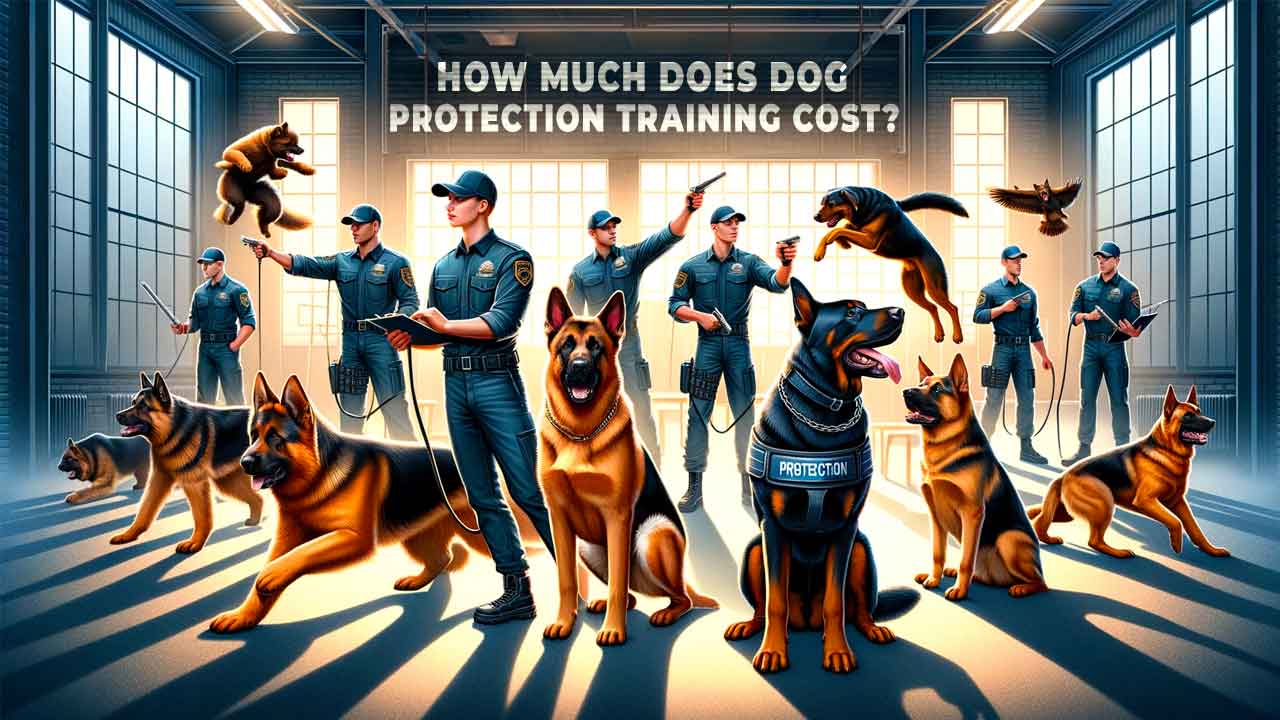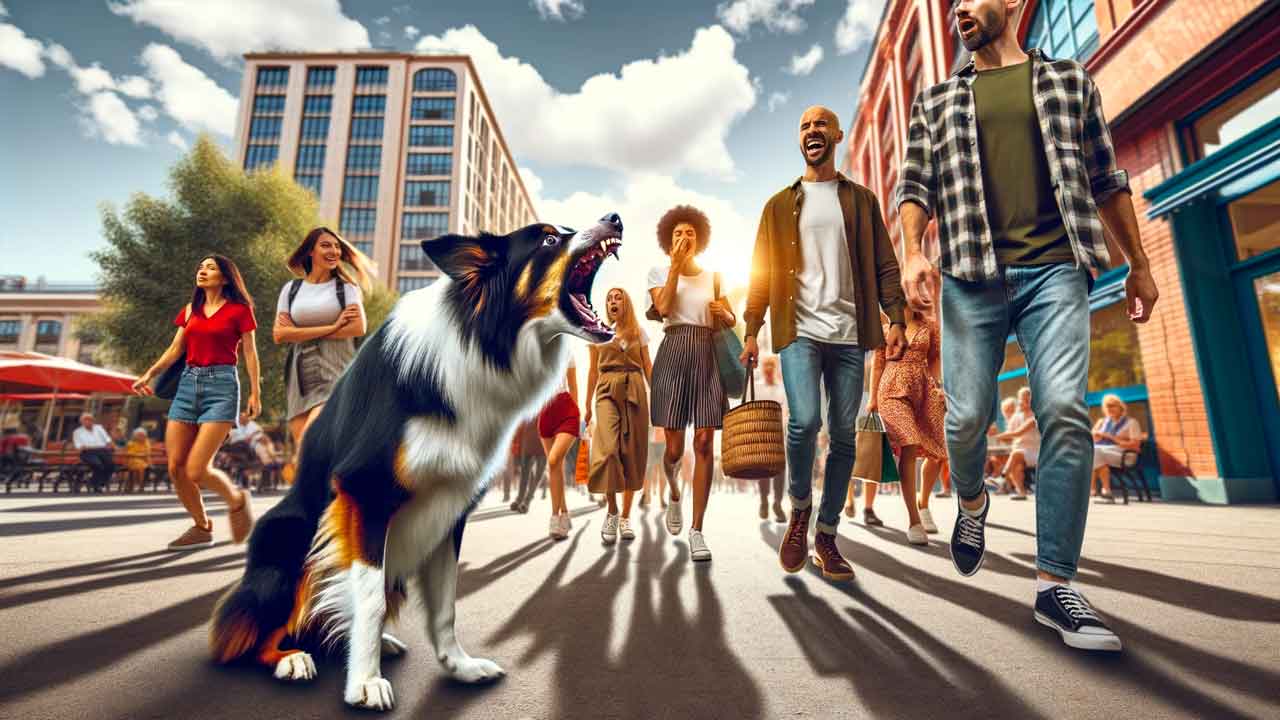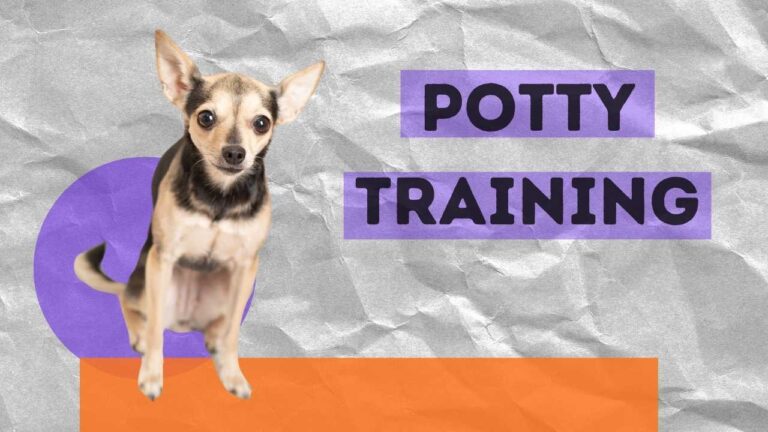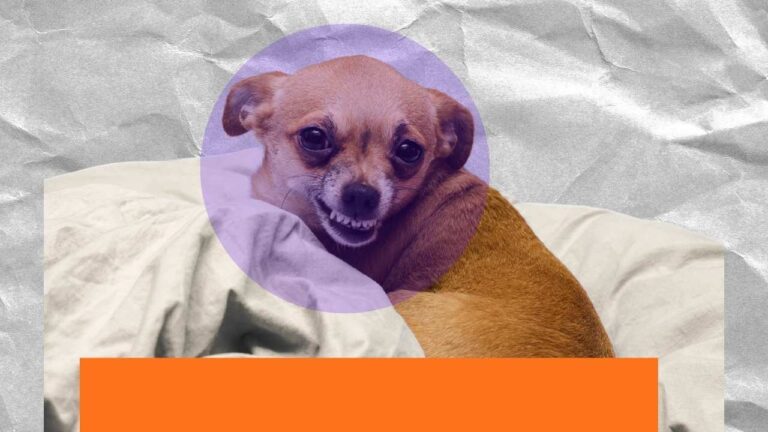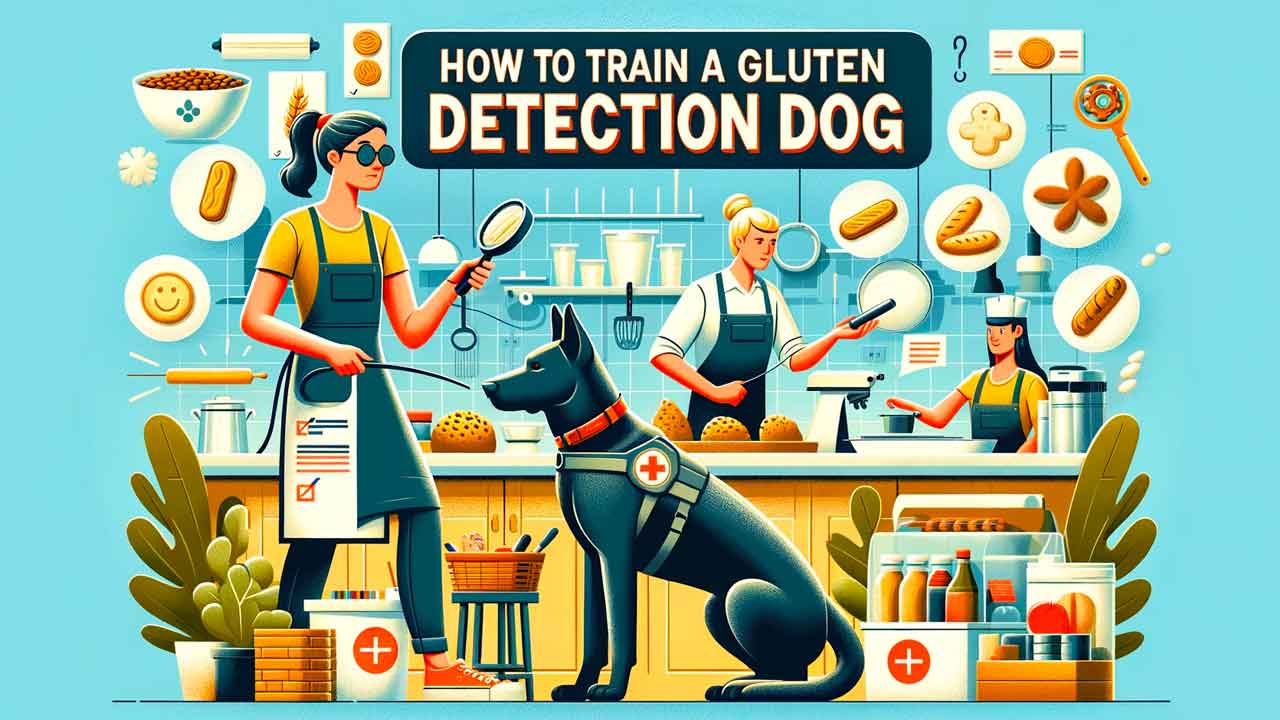Where To Start With a Reactive Dog: The Ultimate Guide
Table of Contents
First: how are you doing? I know how your dog reactivity is taking over your life
Living with a reactive dog is a lot to deal with. In extreme cases, it can be overwhelming and leave you feeling trapped. When you first thought about getting a dog, you likely imagined relaxing strolls together or tossing a ball in the park. Perhaps you wanted a companion for runs or hikes. You may have even considered participating in canine activities like obstacle courses. Confronting the reality of having a dog who struggles with these simple activities indeed is heartbreaking. With a reactive dog, even routine tasks become complex. A simple walk around the block turns into a strategic operation. Then there's the issue of dealing with critical onlookers. Many owners of reactive dogs often face disapproving looks and comments like “keep your dog in check!” when they’re out and about.
Even if these incidents don't actually occur, it can certainly FEEL like everyone is watching and criticizing.
The judgment from strangers, whether real or imagined, is nothing compared to the harsh self-criticism we inflict on ourselves.
- I'm completely clueless. I ‘m probably making everything worse.
- I'm terrible at this. My dog deserves a better owner.
- Damn, I can't stand this ridiculous dog.
- I'm an awful person for resenting my dog.
- This is entirely my fault.
Does this sound familiar? First off, don't blame yourself. Yes, I know the saying: “there are no problematic dogs, only problematic owners.”
But that's not fair. No, your dog isn't “problematic,” but that doesn't mean you're a bad owner.

Living with a reactive dog can be very tiring. You always have to be careful when walking because your dog might react to the leash. You can’t enjoy simple things like going to the park, and you miss out on fun group training classes. Always being on the lookout for things that might upset your dog is exhausting and stressful.
Read on to get to know expert trainers' opinions and solutions for reactive dogs, and why I think your dog does have a chance to completely recover from reactivity!
There is hope in Tackling your dog reactivity
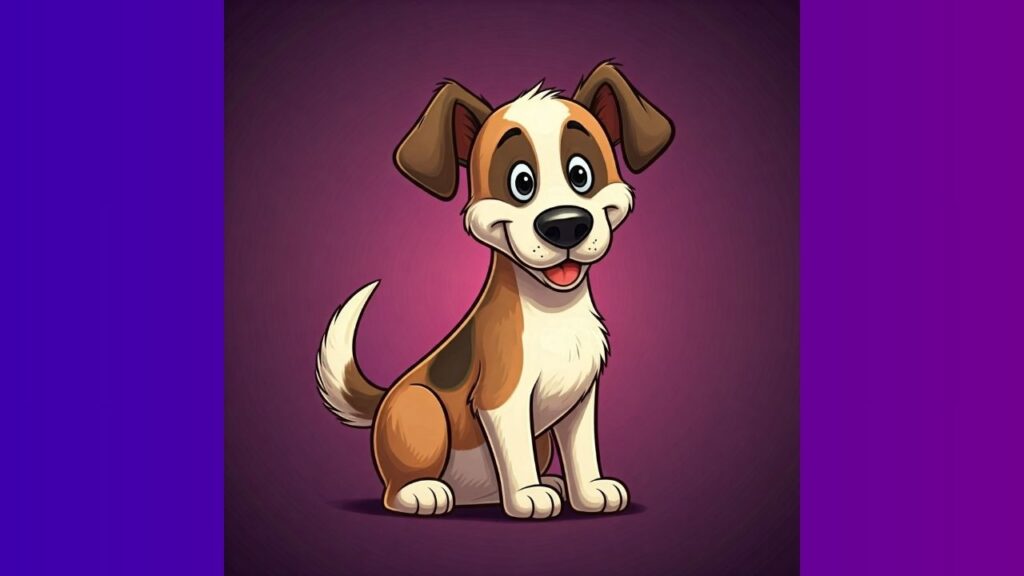
There's definitely hope! Modern positive reinforcement techniques can effectively address reactivity.
This challenge isn’t impossible to overcome – there’s hope ahead.
But it's not as straightforward as teaching basic commands like sit, stay, or not begging. Those skills can often be mastered by following simple online instructions, leading to quick success.
Tackling reactivity requires from you, especially if you're taking a DIY approach rather than working with a professional trainer. (While consulting an expert is ideal for faster progress, I understand budget constraints can make this difficult. That ‘s why at the end of this article I will be recommending the Best online program to tackle reactivity which helped thousands of owners around the world finally have the well-behaved dog they always dreamed to have) You'll need to go beyond just following a basic “recipe.” It requires diving deeper and essentially becoming an amateur dog behaviorist yourself. You'll need to learn to read canine body language and absorb a variety of other concepts we'll explore in this article.
The upside? While the reactivity training I recommend asks a lot from you, it gives back exponentially more. It helps build that strong bond you dreamed of when you first got your dog. It's a journey that requires a lot of effort but gives great rewards.
This process of learning and working closely with your dog will transform your relationship, turning a challenging situation into an opportunity for profound connection and mutual growth.
Reactive Dogs are Uncomfortable
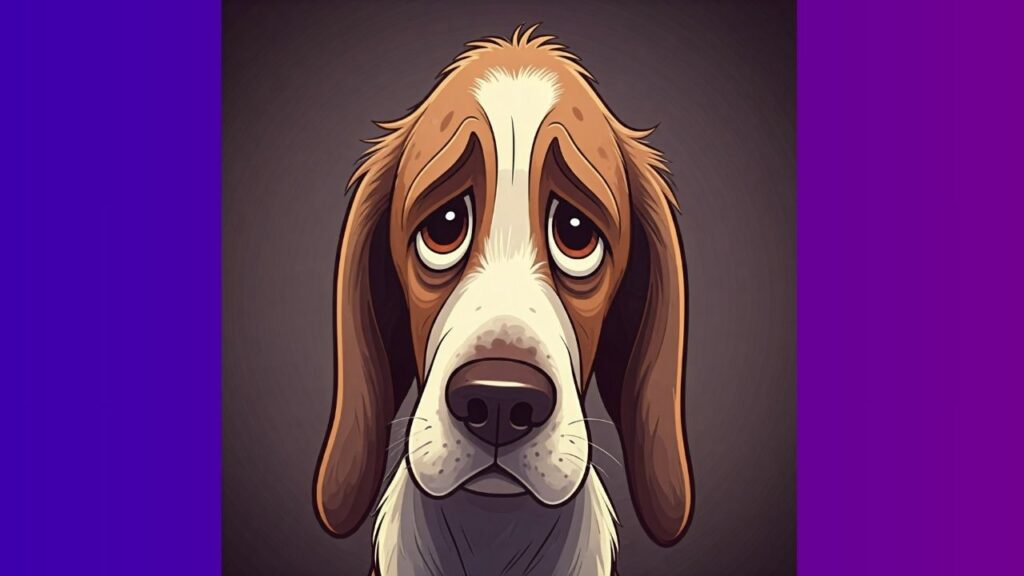
Reactivity often stems from discomfort. While it might seem like your dog is being “protective” or “dominant-aggressive,” the most likely and common reason for this behavior is that they're uncomfortable, stressed, and often frightened in certain situations.
Just like humans, dogs have different responses to anxiety-inducing scenarios. Some may try to retreat, while others opt for confrontation when faced with stressful situations.
This doesn't necessarily mean they actually want to attack the other dog – it just appears to be the only viable option from their perspective.
Especially when leashed, your reactive dog may resort to what looks like aggressive charging towards other dogs. In reality, this is often their perceived last-resort solution to handle a threatening situation. They're reacting in the only way they know how: by choosing to be the aggressor first.
We can’t make this discomfort go away by scolding our dog. In fact, punishing them for displaying stress through barking, lunging, or growling will likely increase their anxiety. In their mind, if you're upset too, it must mean the situation is truly dangerous!
Instead, always maintain a calm and composed demeanor when your dog becomes frightened and reacts negatively. Gently lead them away from the trigger until they're more relaxed and at ease again.

Things You Need to Understand
Reactivity triggers?
Dogs can develop reactivity to various stimuli, and these triggers can vary widely from one dog to another. Some common triggers include:
- People associated with past negative experiences
- Unfamiliar adults, especially those in unusual clothing or those approaching in a particular way
- Children, whose quick and unpredictable movements
- Other dogs, regardless of size or breed
- Small animals like cats, rabbits, squirrels, or birds
- Fast-moving objects such as vehicles, bicycles, or skateboards
The specificity of these triggers can differ among reactive dogs. Some may react to broad categories (e.g., all dogs encountered outside), while others might only react in more specific circumstances (e.g., only to large dogs approaching head-on within a certain distance).
Understanding your dog's particular triggers is important in managing their reactivity and developing an effective training plan. It's important to note that triggers can sometimes be subtle or specific, and may require careful observation to identify accurately. Click here to download a free printable template to track your dog's triggers.
Recognizing these triggers allows you to better predict and manage potentially stressful situations for your dog, laying the groundwork for behavior modification techniques.
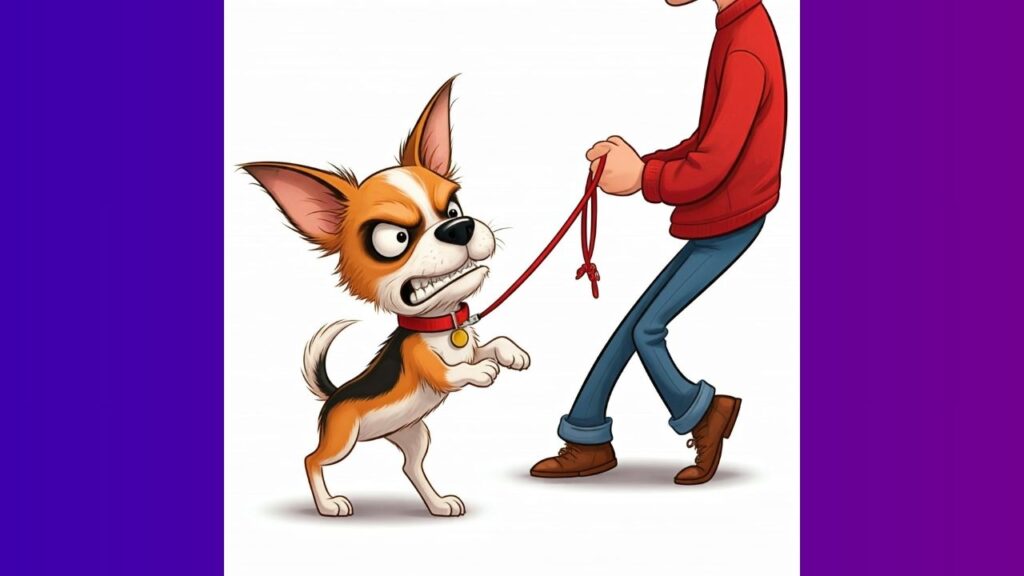
Thresholds
Every reactive dog has a threshold—a point where their trigger will cause them to fully react, with a capital R. Below this threshold, your dog might seem a bit antsy or on edge, but they can still manage their actions and pay attention to you. Once they cross that threshold, though, they lose control and react based on fear or instinct.
For a dog reacting out of fear, this is when the fight-or-flight response takes over.For a dog reacting out of frustration, it’s when they become so fixated on the trigger that everything else fades away. At that point, you could yell, pull on the leash, or offer treats, and they’d still act like you’re not even there.
My approach to training is all about keeping your dog under threshold. This means working at a safe distance where your dog can recognize the trigger but isn’t overwhelmed by it. This critical distance—also known as sub-threshold distance—allows your dog to remain in control and avoid reactive outbursts.
You don’t need, or want, your dog to have a reaction in order to address reactivity. In fact, the goal is to prevent reactions altogether. If your dog does go over threshold, it can take days or even a week for them to recover from the cortisol and adrenaline rush. During this time, it’s important to minimize any additional stress.
Gradually increasing your dog’s exposure to triggers while keeping them under threshold is key. If their current threshold is half a football field away, the goal is to gradually reduce that distance to a quarter field, then closer, without causing a reaction.
How can you tell if your dog is approaching their threshold? if they start to go bonkers, they’re definitely over it. but they’ll also give more subtle signs when they’re getting close.
Observe:
- Fixated stare ears forward, body aimed directly at the trigger.
- Raised hackles—an involuntary response that’s a clear sign of your dog’s internal state.
- Growling—this one’s straightforward.
- Increasingly frantic movements—your dog might dart around, tap dance with their paws, or bounce up and down.
- Unique signals—every dog has their own tells that indicate stress. learn to recognize yours.
- If you notice any of these signs, you’re too close to the threshold. back off to a safer distance and continue working from there.
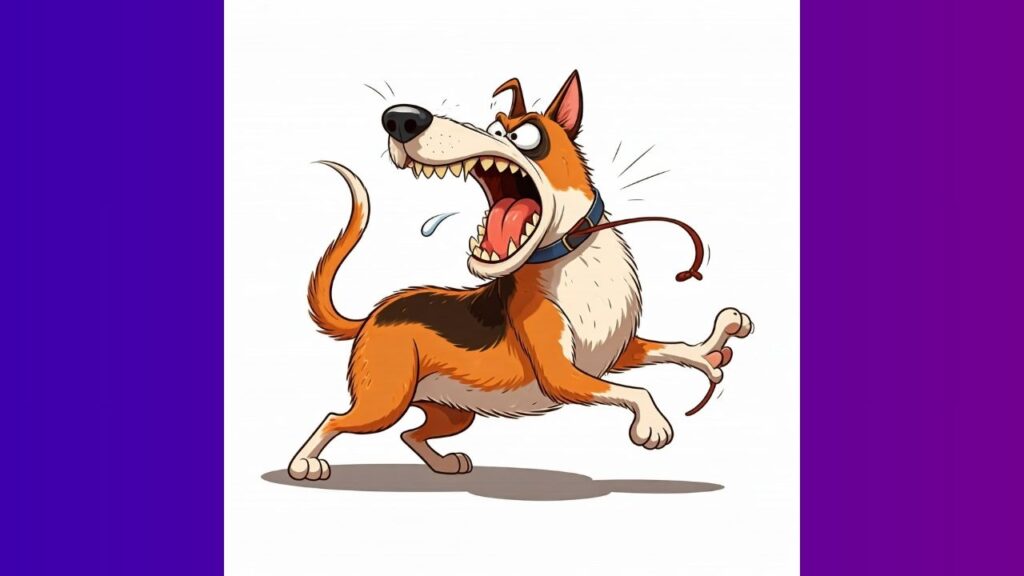
Dog Body Language
Understanding your reactive dog’s body language is very important. it might often seem like your dog is reacting suddenly, without warning, leaving you feeling uncertain and nervous about managing these behaviors. However, by learning to read your dog’s body language, you can recognize subtle signs that a reaction is coming. knowing when your dog is on the verge of reacting not only helps you stay calm, but also gives you the chance to intervene early. Body language offers clues like a forward-leaning stance or tense muscles, which are often signs of anxiety, while tail wagging might indicate an attempt to signal friendliness.
Recognizing body language also helps you evaluate other dogs around you, especially during walks or playtime. Being able to assess whether another dog is calm or reactive can guide you in deciding whether to approach or avoid the situation. Additionally, observing your dog’s body language can indicate their comfort level during training, helping you determine if they are feeling overwhelmed or if the training is working.
To truly understand your dog’s body language, it’s best to watch them in action, ideally through slowed-down footage that captures the details of their movements. Much like learning a new spoken language, slowing down these interactions allows you to see things you might otherwise miss.
Dog Reactivity Chart
When working with a reactive dog, understanding their reactivity zones is crucial. These zones help you gauge where your dog is mentally and how close they are to reaching their threshold—the point where they can no longer control their reactions.
The green zone
The ideal state for your reactive dog is the green zone. Here, they’re calm, able to sniff around, take treats, and follow your cues without hesitation. Their leash remains relaxed, and they don’t exhibit any reactive behaviors. This is where you want your dog to be as much as possible. A dog in the green zone is in a great mindset for learning and building positive associations with their triggers.
While your dog is in the green zone, you can let them observe their surroundings from a safe distance, practice fun tricks, or engage in a short game with a favorite toy. take note of the distance between your dog and the trigger and use it as a reference point for future training sessions.
The yellow zone
as your dog moves closer to their reactivity threshold, they enter the yellow zone. Here, they might stop sniffing and become more focused on their trigger. While they can still follow cues and take treats, their body language might become slightly tense. A little stress in this zone isn’t necessarily bad—it can even help in the learning process—but it’s important not to push too far.
If your dog is in the yellow zone, consider playing reactivity games like engage/disengage or practicing simple tricks. keep a close eye on your dog’s body language and the trigger’s intensity to avoid slipping into the more dangerous orange zone.
The orange zone
Once your dog reaches the orange zone, they’re over the threshold. At this point, your dog is too stressed to learn or form positive associations. They’re hyper-focused on the trigger, and likely pulling on the leash. They may also start growling or “huffing” under their breath.
If your dog is in the orange zone, it’s time to remove them from the situation quickly. Use management techniques to reduce their stress and help distract them as you make your exit. Once you’re out of the triggering environment, help your dog relax with activities like sniffing or searching for treats. reflect on what led to this situation and adjust your training plan to prevent it from happening again.
The red zone
The red zone is where your dog is completely overwhelmed by their trigger. They can’t listen to you, not because they’re being defiant, but because they’re too stressed to think clearly. They might be barking, lunging, or displaying other intense reactive behaviors.
When your dog reaches the red zone, your priority is to get out of the situation as quickly as possible. Avoid yelling or punishing your dog, as this will only add to their stress. After the incident, provide plenty of opportunities for your dog to decompress. Instead, reflect on the situation and think about how you can better manage it next time.
How To Use Your Dog Reactivity Chart
You can use dog reactivity chart after you have completed the Tackling Reactivity Course or met with a local reactive dog trainer, and fully understand and track all the triggers your dog may face.
When walking your dog, bring the chart and monitor their reactivity. Keep them in the green and yellow zones. If they approach the orange zone, immediately retreat from the trigger.
In busy areas, it can be challenging to use the reactivity chart effectively. Choose off-peak hours for walks when fewer people are out. For dogs with severe reactivity, walks may need to be suspended temporarily.
The most effective way to address reactivity is through controlled sessions. Arrange to meet a friend with their dog in an open space, or choose a park or trail where you can maintain distance from other dogs. Approach triggers from afar, offering treats and allowing ground sniffing. Ensure the leash remains loose and your dog stays relaxed.
Refer to your reactivity chart: Is your dog still in the yellow or green zone? If not, increase the distance from the trigger. This is crucial for long-term improvement in their reactive behavior.
Reactive Dog Training Tips
Finding a local dog trainer who specializes in reactive dogs can be tough and very expensive. That's why I recommend Spirit dog’s tackling reactivity online course.
Tackling reactivity is a self-paced online program that guides you through training your dog. Steffi breaks down the why, what, and how of reactive dog training in a clear and detailed way.
With plenty of videos and graphics, the course is easy to follow. If you stay committed and consistent, you’ll likely see significant changes in your dog’s behavior in no time.
A major perk of the tackling reactivity course is that you can send in videos of your dog for personalized feedback. How awesome is that?
This course can help with dogs that are reactive in the car, towards people in your home, in the yard or at the fence, to sounds, and more.
It's important to remember that this isn’t an overnight fix. it requires a serious commitment from you, including changing some of your habits and routines.
But isn’t your dog worth it?
Find out more about Spirit dog’s tackling reactivity online course.
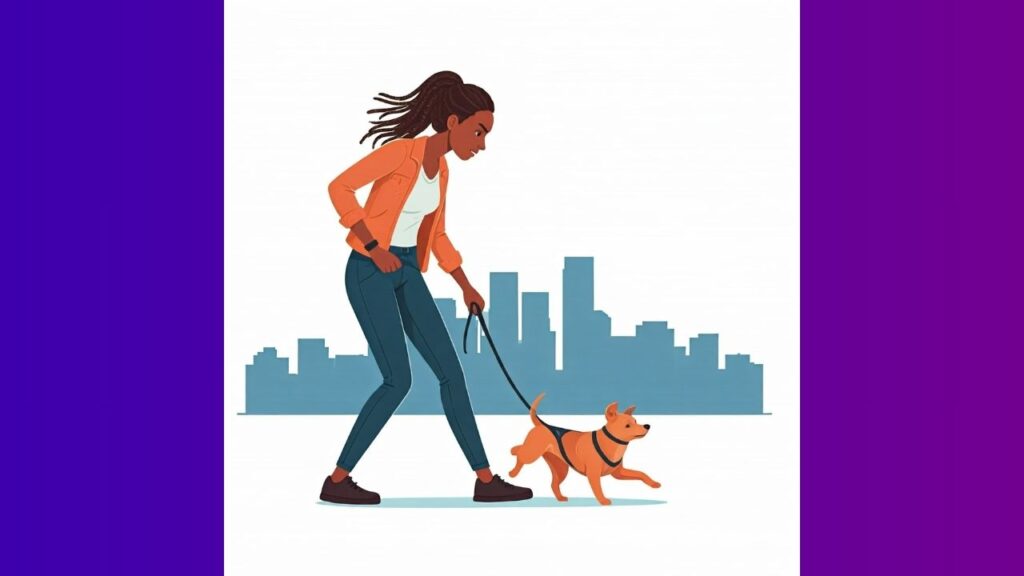
Here are 7 reactivity dog training tips:
- begin with basic commands: Before addressing reactivity, your dog needs to master basic obedience commands like “sit,” “stay,” and “come.” These commands provide a way to communicate with your dog and help redirect their attention when they start to react.
- Introducing your dog to the world: Desensitization helps your dog get used to everyday sounds and situations, such as bikes, skateboards, cars, sirens, and people talking. By regularly taking your dog out, they can learn to associate these things with positive experiences, helping them become more comfortable and confident over time.
- Stay calm, be patient, and avoid punishment: Using punishment can worsen reactivity. Instead, focus on positive reinforcement and gently redirect your dog’s attention.
- Establishing a routine: Routines are important for dogs, as they thrive on predictability. When your dog knows what to expect each day, like morning walks and playtime, it helps them feel secure. by sticking to a routine, your dog will gradually becomes less anxious and more confident.
- Gradually expose your dog to triggers: Often, dogs react out of fear. Once you identify what triggers your dog’s anxiety, work on slowly getting them used to it. While some things like loud noises may always be challenging, familiarizing your dog with specific objects or places can reduce their reactivity. Just be sure to keep your dog at a safe distance and pay attention to their body language.
- Play the “find it” game: When your dog sees something that triggers them, toss their favorite treats on the ground and say “find it.” Practice this game at home in a calm setting before trying it around other dogs or triggers. Once your dog understands the game, they’ll be more likely to focus on the treats instead of the trigger.
- Train focus commands: Teaching focus commands like “watch me” or “look at me” can be highly effective in managing your dog’s reactivity. Start training these commands in a quiet environment, rewarding your dog each time they make eye contact. As your dog improves, consider using a clicker to mark the behavior and reward them right away.
In conclusion
Start by finding a reputable local dog trainer who specializes in reactive dogs, or consider the reactive dog training course.
So, what will you decide? Are you ready to do whatever it takes to help your dog overcome their reactivity, for both your sakes?
Discover more about Spirit dog’s tackling reactivity online course. With instant access, personal trainer support, and a 60-day unconditional money-back guarantee, what are you waiting for? You’ve got nothing to lose and everything to gain!

